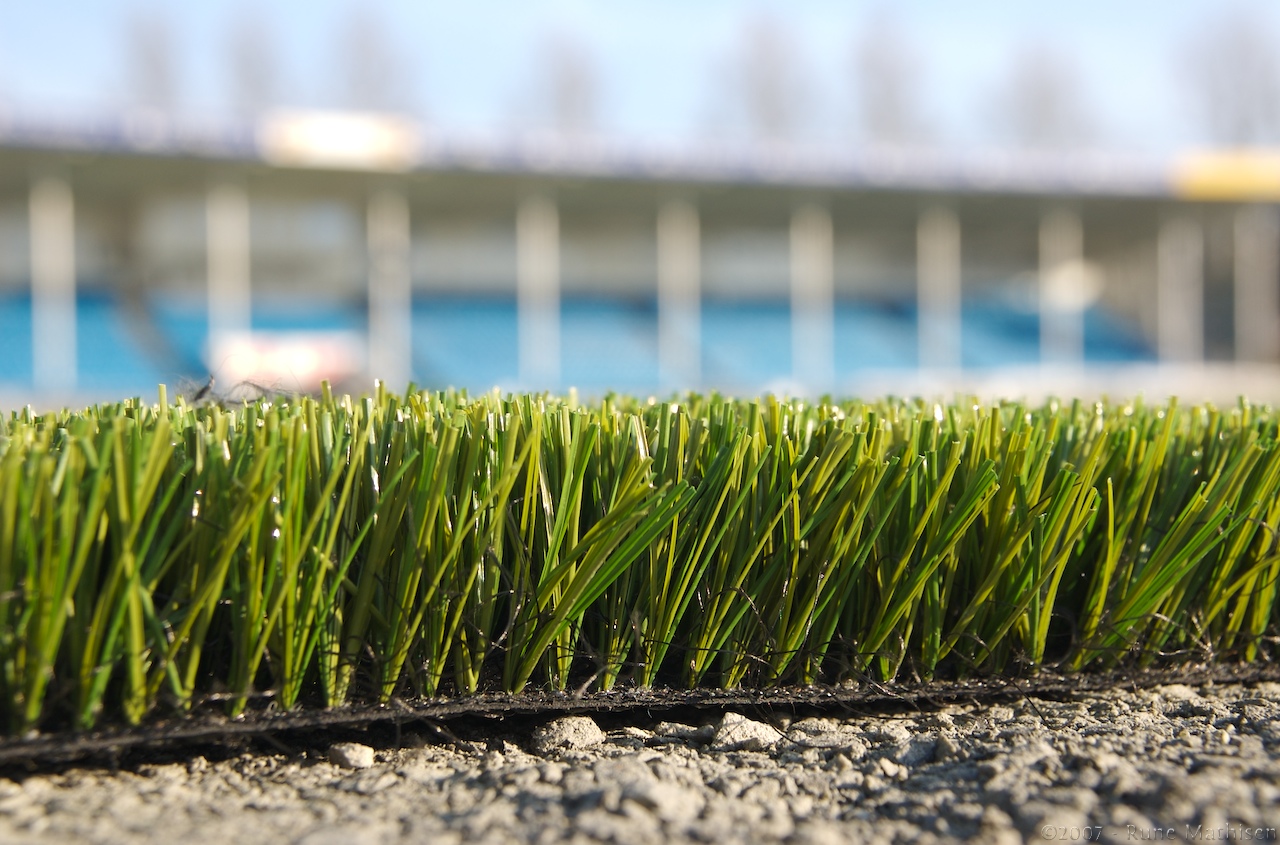5 reasons that Fake grass is so Dead
 Turfgrass doesn’t belong in Southern California. It’s far too water-thirsty for our dry climate. Plus turfgrass demands chemicals to keep it green, and most lawnmowers are highly polluting with both smog-producing particulate and global-warming carbon emissions.
Turfgrass doesn’t belong in Southern California. It’s far too water-thirsty for our dry climate. Plus turfgrass demands chemicals to keep it green, and most lawnmowers are highly polluting with both smog-producing particulate and global-warming carbon emissions.
We need to shift our visual sense of what’s “normal” away from turfgrass. But Councilman LaBonge wants to give away LADWP credits for turfgrass removal, to people who install artificial lawns. NO WAY!
Here’s why Fake Grass is a really bad, unsustainable idea:
1) Changing aesthetics – It’s time for SoCalif to embrace a new Look in landscaping fashions: a cityscape which isn’t carpetted in climate-inappropriate green. Artificial turf doesn’t solve anything. Artificial turf is a way of pretending we’re living in a place of water bounty, thereby avoiding the reality around us. While it may decrease water usage somewhat (I’ve seen people hose off their artificial turf to “make it look right”), artificial turf does nothing to move us toward a more-sustainable future.
2) We need a live environment – Environmental course-correction is taking place in many places in our society. There’s a massive shift going on, from a human-centric view of the world (“me, me, me”), to understanding the necessity of nurturing rich, alive, diverse ecosystems which sustain all life — including human life. Artificial turf grows no earthworms. Right now we need more earthworms — together with the rich diversity of bacteria, fungi, arthropods, and microscopic organisms which are in healthy, alive soils..jpg)
3) Carbon Sequestration – The cutting edge of soil science now reveals that our soils may be the best, quickest, and cheapest solution humanity has to combat global warming. Rich organic soils, planted and mulched to nurture live soil organisms, can capture carbon, infiltrate water, and improve air quality. (Read more about it in The Soil Will Save Us, by Kristen Ohlson, or read about the work of the Marin Carbon Project). This is the direction of the future: stewarding our soils to heal some of the worst problems in the world.
4) Rainwater infiltration -The soil beneath artificial turf is dead, compacted, and often plastic-wrapped by weed barriers, completely useless for rainwater infiltation; rain runs off into the storm drains where it is treated as if it is a waste product. By contrast, healthy aive soils are “friable”, kept loose and porous to great depth by earthworms and other soil organisms. When it rains on healthy alive soils, rainwater infiltrates — it soaks in instead running off. That means local water will replenish the underground aquifers beneath our city. This is the direction of the future: capturing the valuable rainwater which falls on our city.
5) Littering and physical pollution – Artificial turf and weed barriers will deteriorate under SoCalif UV radiation, and as they do so the plastic falls to pieces. Bits of plastic and shreds of sheeting drift around our city neighborhoods. They’re unsightly, they get stuck in foliage and waterways, they reduce property values, and someone has to pick up all that litter. (Hmmm, let’s get Councilman LaBonge out there picking up all that trash.)
Better choices for turf removal
(all of which simultaneously help capture carbon):
- California native plants, which provide food and homes for urban wildlife, birds, butterflies, and beneficial insects;
- mulching the soil surface with tree chips or “things that used to be plants”, which enriches the underlying soil as the mulch decomposes, and provides food for a rich panorama of soil biota;
- fruit trees and vegetable gardens, which grow fresh healthy organic food, decrease the fossil-fuels impact and global-warming emissions of transporting your food, get you outdoors exercising and involved with the natural world, and can have economic benefits (such as decreasing grocery bills, or joining urban agriculture and the cottage food industry). Drought-tolerant gardens ARE possible — it’s simply a matter of learning the skills!
